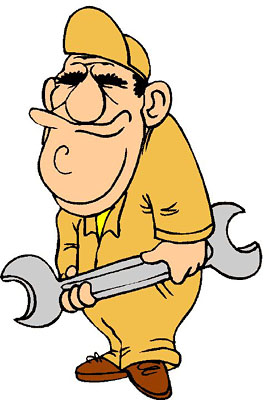Maintenance Tips & Hints
Our fuel is one of the most important over looked tools to safe flight.
We should be using Premium grade gas and it should be fresh with each flight. Premium fuel will degrade and loose octane in as little as three weeks. If you fuel is older than that, drain your tank, put it in your car, and buy fresh high octane fuel.
Additionally we should be checking our fuel for water and additives. I try to use fuel from the same station once I found a good one. Even then check once in awhile since your good station could get a bad load of fuel. I have found my local Irving to be excellent and have never had water yet.
To test for water do the Olive Jar Test.
1. Buy a tall thin bottle of salad olives, eat the olives
2. Draw a dark line on the jar ( outside of Jar) 1/4 the way up from the bottom.
3. Will with water up to the line
4. Add fuel to near top, shake energetically ( with top on jar )
5. If the water line now is higher than the line you have water in your fuel.
Oxygenates except MTBEs will mix with water and their volume in the fuel will show as the rise able the line. Oxygenates are bad for the Rotax seals and of course water is bad.
This page will be for maintenance tips that our members have found to be useful.
In the near future Jerry Sukeforth will have a few suggestions here.
Also if you have a tip you would like to have here, e-mail me and I will consider the tip.
Our Mr. Sukeforth will be the ultimate judge on if a tip is accurate and true for us to publish here.
This photo and tip is from the book
" The Powered Parachute Bible" by George A. Begue'
Rotax recommends that our 582 engines run with a water temperature of 150-180 degrees. Many of us run much cooler than that. Ultra-Flight Magazine recently had an article about cold seizures resulting from cold running temperatures.
I recently bought the Ezy-Change radiator cover shown above. A simple hard resin product that has sliding doors with a 9 foot push/pull cable. It cost $54.00. It is designed to cover about 2/3 of the radiator to avoid mistaken over heating. Second photo is the device installed on my Blue Heron. Third photo shows the push/pull know installed on the left just next to the key. It is simple to pull or push the control knob which opens or shuts the louvers.
I have not had a chance to fly yet but will shortly and will report the results here.
Product can be purchased from Fun Flight of Minnesota. E-mail info@powerchutes.com 1-763-786-5923
They will custom make the cover for your size radiator at no extra cost.
One of the things we pilots should be doing is an annual inspection of our own machines. This should be done each spring and a record kept of it, signed and dated by the pilot or person doing the inspection.
In addition to making your plane safer to fly it will also demonstrate to the Sport Pilot Instructor that you are a serious pilot that takes your planes safety seriously.
Below is two attachments, ( one page each) that you can click on and print out. Then go down each item as you go over your plane. When you are finished date and sign it and keep it with your pilot log.
Tip 1
Tip 2
Tip 3
Inspection Forms were in the Feb. 2004 issue of Ultra-Flight Magazine.
Tip 4
Recent member lost his engine while in flight. As the RPM started to drop he shut it off to avoid more severe damage. Landed safely on a frozen lake.
Engine was torn down to discover by Sukee that the oil injection pump failed due to dirt.
Tip : Matter what type filter you run on your oil line, change it once per year.

Tip 5
Each year across the nation there are fires caused by fueling. Most common are those at gas stations while fueling 5 gallon jugs.
Ultra-Flight radio just had an interesting segment on this topic and I also went to the author's website and read up on it. The Ultra-Flight Radio segment can still be listened to by going to their site and looking at the saved articles.
In essence- Filling jugs fires are caused by a spark caused by static electricity. A plastic 5 gallon jug will create more static than a metal one. Additionally the swirling action of the fuel in a Mr. Funnel also creates static electricity. Any time the fuel is moving through or over plastic it is building up a charge.
I
In order for that built up charge to act (cause fire) it needs an air gap much like a spark plug. If the electrode of a spark plug is jammed with a piece of carbon it will not spark.
To avoid a fire while filling a jug or as important, filling your plane, make absolute sure that you have no air gaps.
Your siphon hose should be in contact with the edge of the 5 gallon jug, The other end of the siphon hose must be in constant contact the Mr. Funnel at all times, and finally the Mr. Funnel must be in contact with the filler neck of your fuel tank.
The author had made the mistake of having 5 jugs lined up in a holder on his trailer. To speed filling at the gas station he had a wood rack with five holes in it to accept the Mr. Funnel. The Mr. Funnel hug straight over the jugs and the downspout fit inside the 5 gallon jug without touching an edge. You guessed it, FIRE
Lastly, if there is fire it usually burns just the fumes for a while without an explosion. You should have a fire extinguisher in your trailer near the door. If you do have a fire, stop the flow from the source and use your extinguisher or cover the fuel with your shirt to smother the fire. Don't try to move the gallon jug.
Tip 6
I always try to keep moisture out of my machine when not in use. I have three small vent plugs to block my two fuel line vents and the oil tank vent. I have a rubber plug to plug the end of the exhaust. Now Jerry gave me the following tip.
Remove your carburators and rotate your prop. At one point you will see the Rotary valve disk close off both openings like the photo on the left below. At that point take some white paint and make a mark in the hole on the disk that rotates with the prop.
Once this is done, every time you stop flying, just rotate the prop until the mark is showing and you know you have both cylinders blocked off to outside air.
For storage at home between blocking any vent lines and the exhaust, this will seal off the inside of your engine to the outside air.
Tip 7 :

